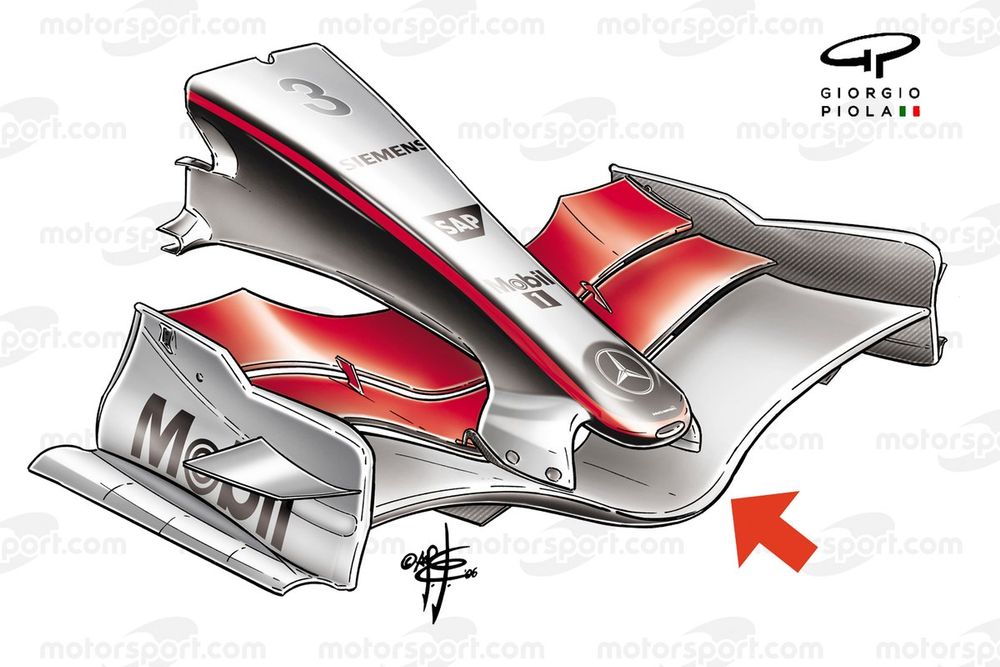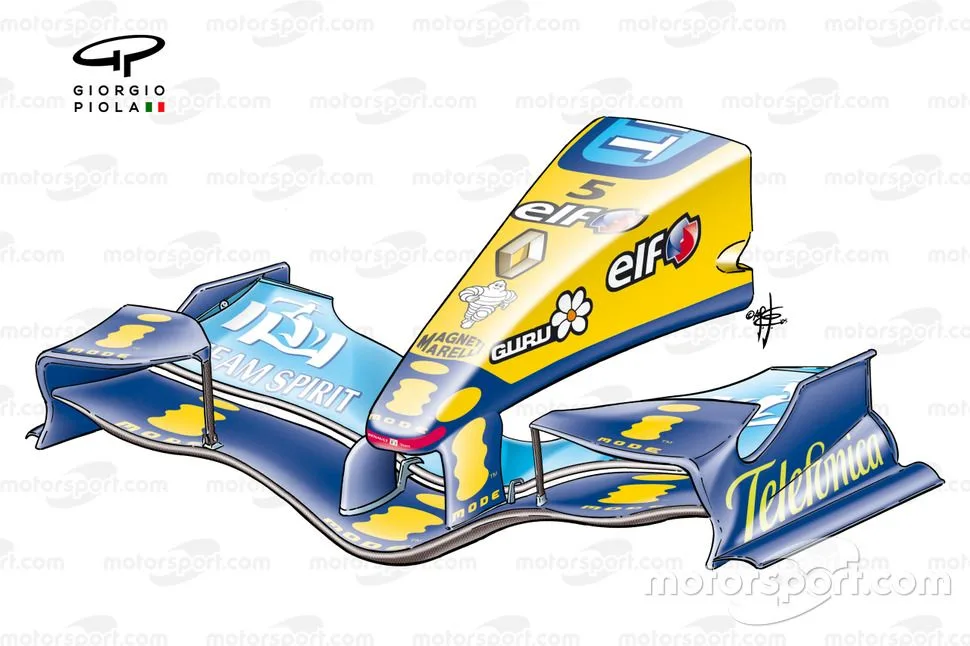Talk of better management of dirty air, of limiting designers’ ability to generate outwash, and prioritising closer racing is the intention, but there is still a lot of time for teams to unpick the good intentions before the cars hit the track for the first time.
The renders provided by the FIA are understood to be a few generations behind where the governing body is in terms of the final draft of the regulations which is set to be signed off later this month.
However, there’s already some interesting observations to be made, even if things have moved on a little from what was published on Thursday.
The first of those is that we could easily be looking at a car born of the 2009 regulation changes, almost as if the last 15 years have been an alternate timeline.
The front wing, pillar arrangement and nose are reminiscent of the generation of cars that preceded that regulation change, with the Renault R25 and McLaren MP4-21 perhaps two iconic cars of that era that would spring to mind.

This could be because there’s a distinct push to alter the behaviour of the front wing again, with the ability to alter the wheel wake profile obviously a key factor in how the rest of the car is laid out.
In that respect, the front wing will be 100mm narrower and there’s also a change in tact when it comes to the footplate region of the wing, which was deleted for 2022 but makes a return in 2026. There’s also scope for other aerodynamic trickery to appear on the surfaces above.
The front wheel deflectors that we find on the current cars have also been deleted, as the technical working group helping to frame these regulations has clearly found other ways with which to deal with the wake being generated.
This includes in-washing wheel wake control boards that will sit on the front of the side pods, whilst there’s also clearly a shift away from the fence and tunnel-like floor arrangement we currently have.
This means a return to a floor arrangement pre-2022, with a raised floor leading edge, flatter midsection and a lower-powered diffuser, which will reduce the need for ultra-stiff and low ride height set-ups.
The beam wing has also been deleted once more, likely due to the aerodynamic coupling effect it creates between the diffuser and rear wing, which could have been a sticking point with the twin moveable rear wing elements.
Perhaps it’s here where we should note that while it is nice to see renders that appear…
Click Here to Read the Full Original Article at Motorsport.com – Formula 1 – Stories…

